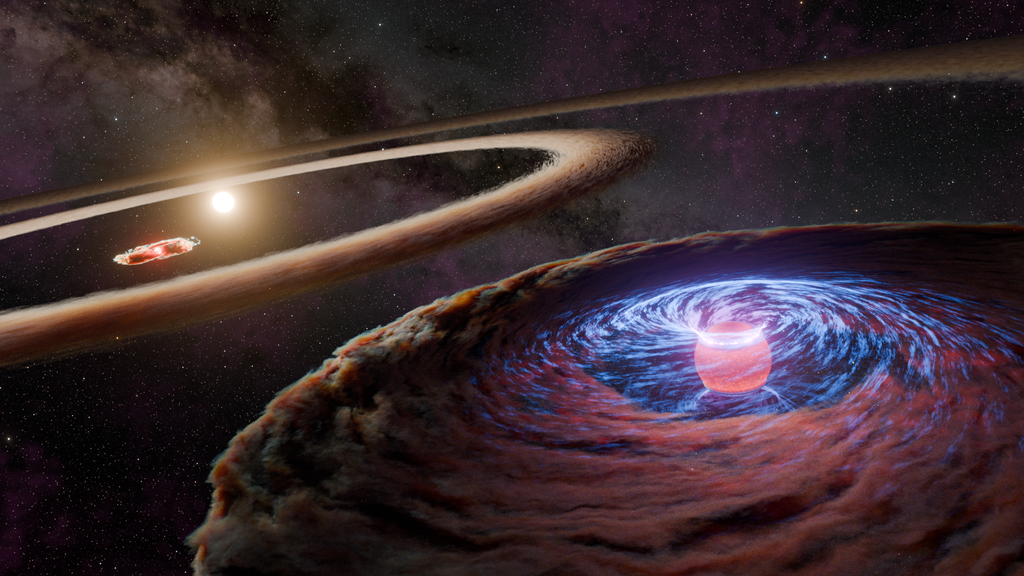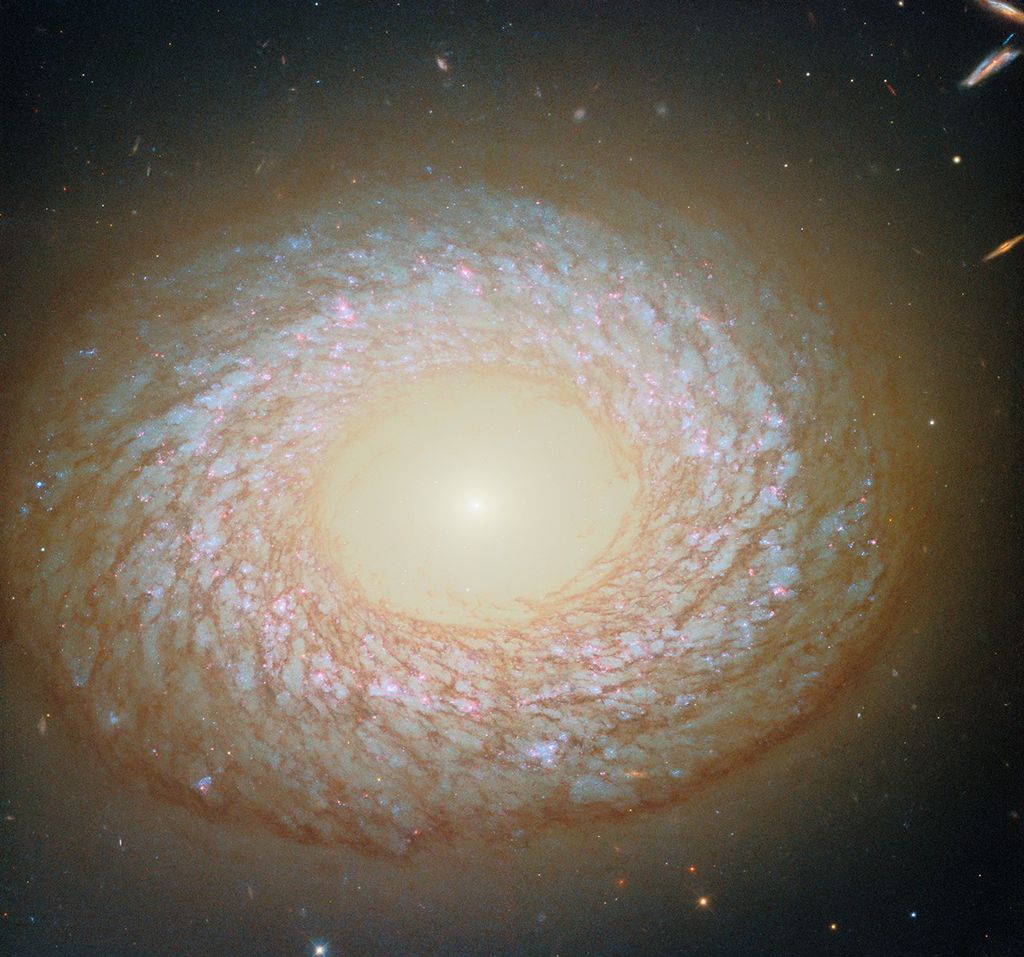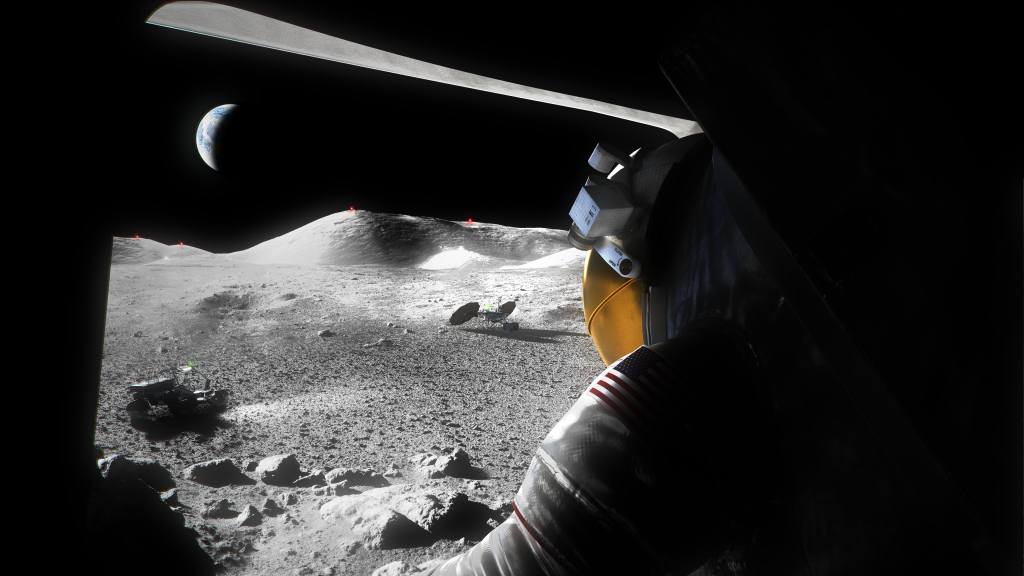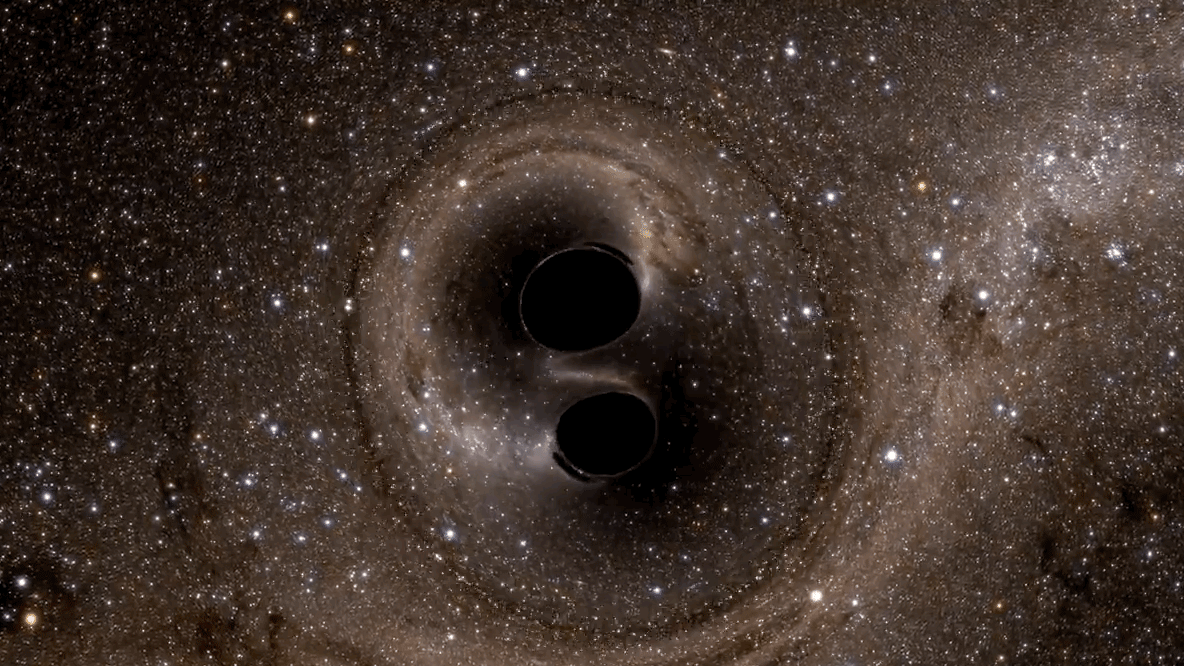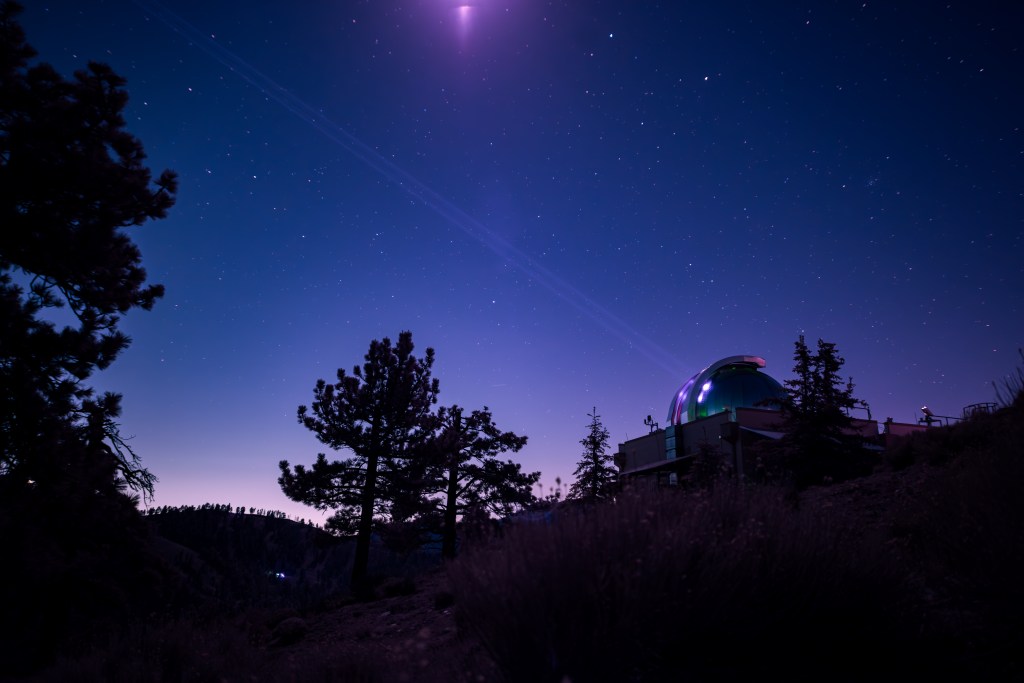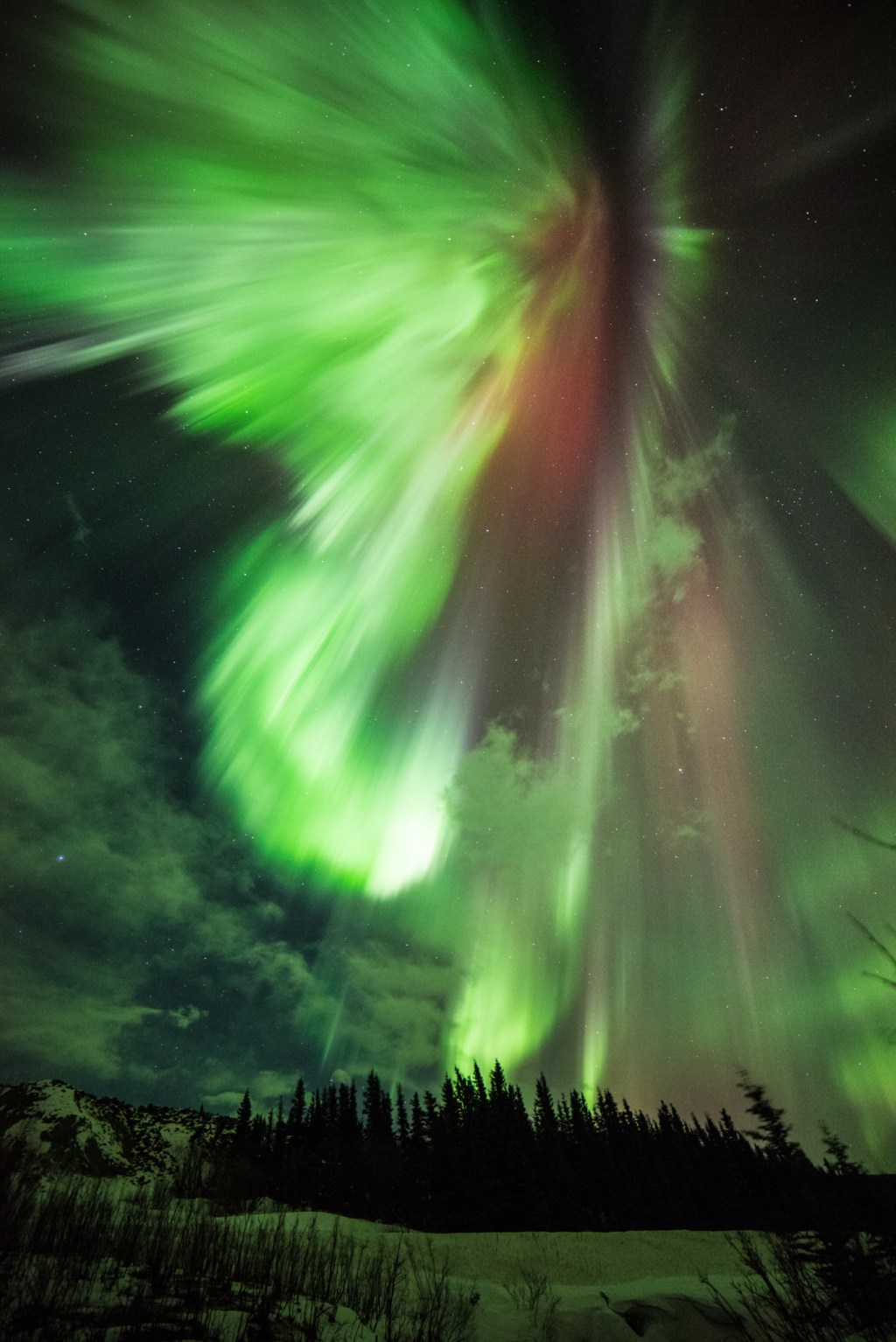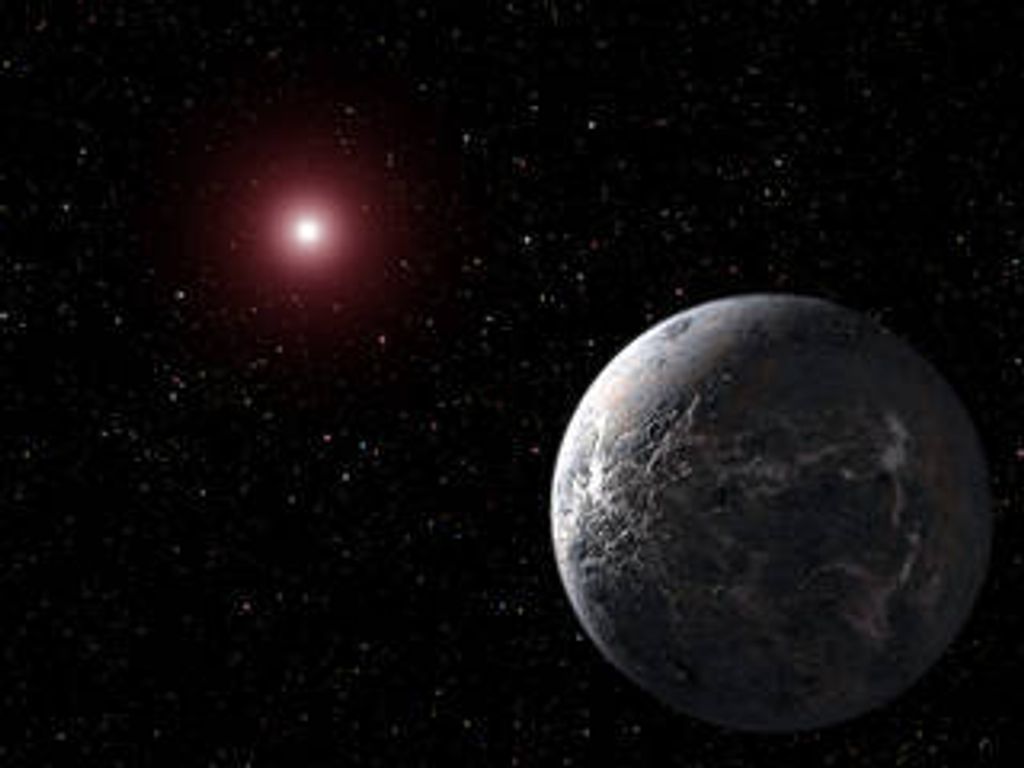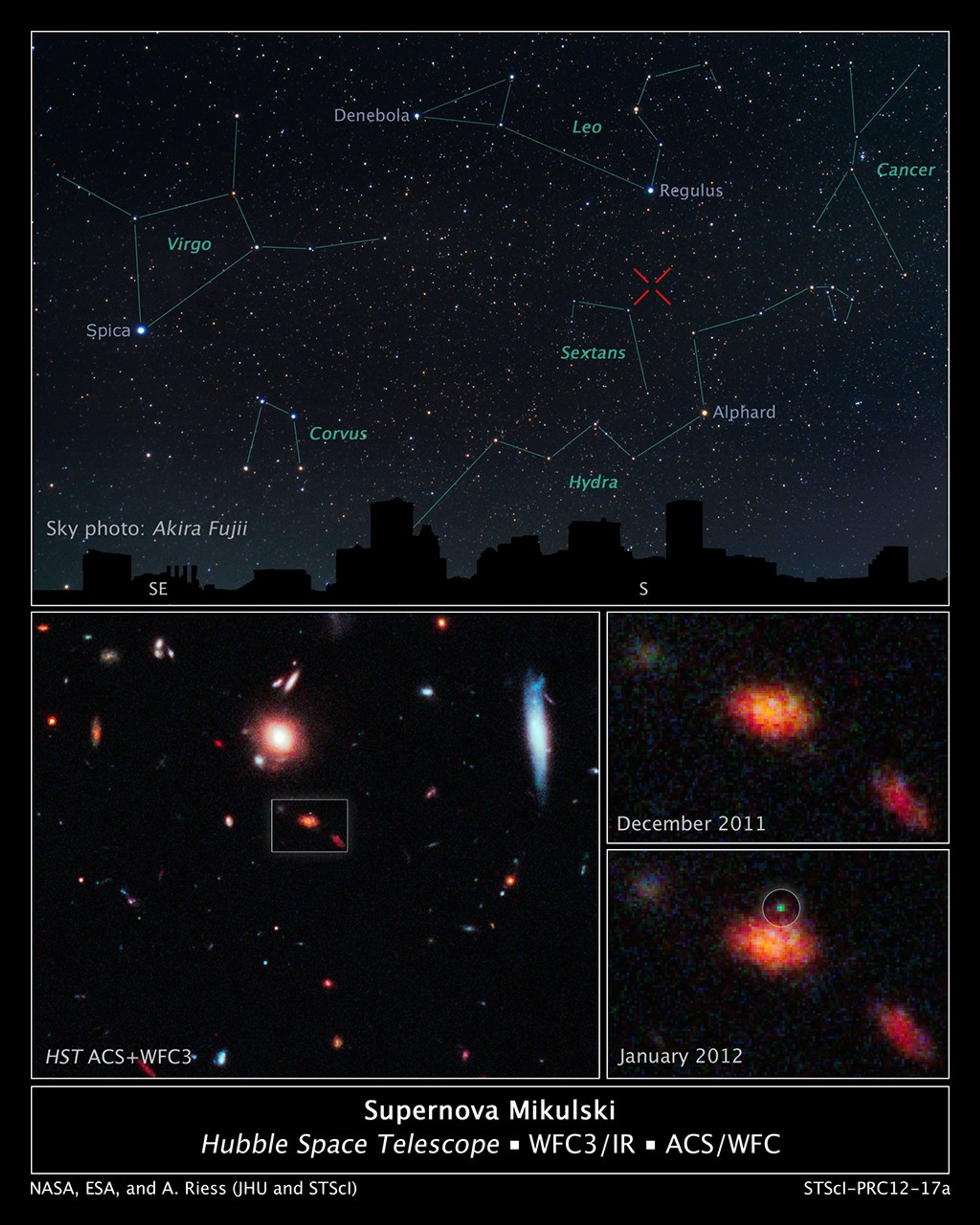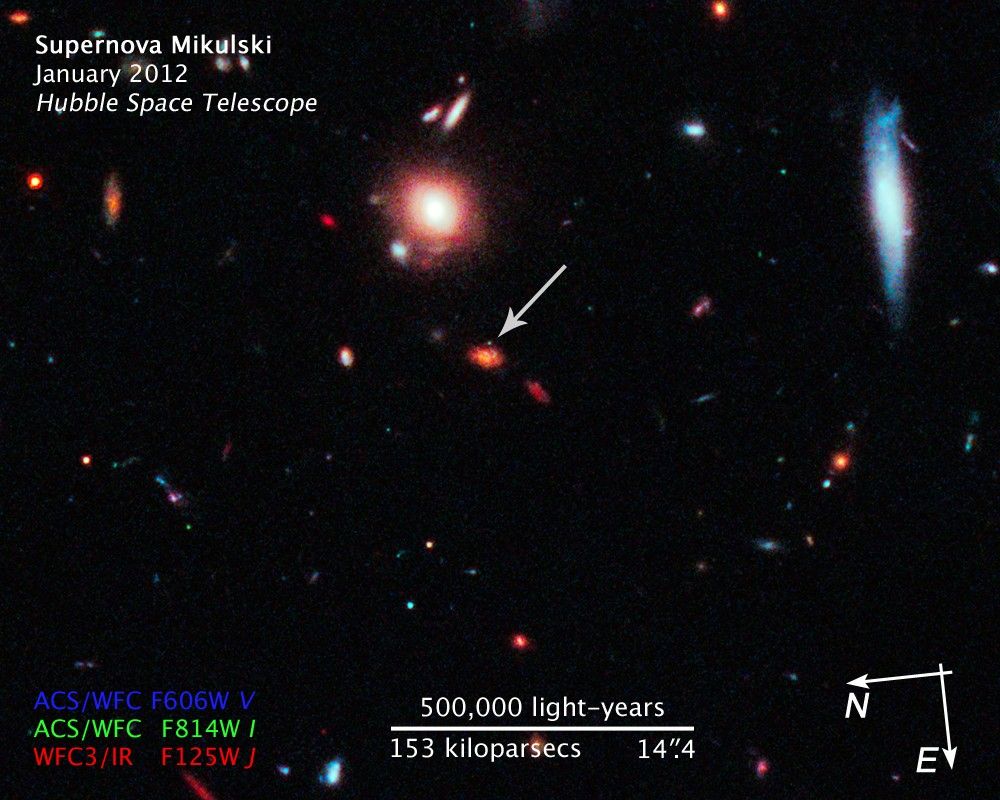1 min read
Full field HST ACS WFC3 with SN

About the Object
- R.A. PositionR.A. PositionRight ascension – analogous to longitude – is one component of an object's position.10h 0m 31.66s
- Dec. PositionDec. PositionDeclination – analogous to latitude – is one component of an object's position.02° 26' 13.84"
- ConstellationConstellationOne of 88 recognized regions of the celestial sphere in which the object appears.Sextans
- DistanceDistanceThe physical distance from Earth to the astronomical object. Distances within our solar system are usually measured in Astronomical Units (AU). Distances between stars are usually measured in light-years. Interstellar distances can also be measured in parsecs.7.4 billion light-years (2.3 billion parsecs)
About the Data
- Data DescriptionData DescriptionProposal: A description of the observations, their scientific justification, and the links to the data available in the science archive.
Science Team: The astronomers who planned the observations and analyzed the data. "PI" refers to the Principal Investigator.The image was created from Hubble data from proposal 12440: S. Faber (University of California, Santa Cruz) and H. Ferguson (STScI) et al. - InstrumentInstrumentThe science instrument used to produce the data.HST>WFC3/IR and HST>ACS/WFC
- Exposure DatesExposure DatesThe date(s) that the telescope made its observations and the total exposure time.December 2011 and January 2012
- FiltersFiltersThe camera filters that were used in the science observations.WFC3/IR F125W (J), ACS/WFC F606W (V), and F814W (I)
- Object NameObject NameA name or catalog number that astronomers use to identify an astronomical object.SN Mikulski
- Object DescriptionObject DescriptionThe type of astronomical object.Supernova Discovered in Hubble CANDELS Data
- Release DateApril 5, 2012
- Science ReleaseSpace Astronomy Archive and Distant Supernova Are Named in Honor Of U.S. Senator Barbara A. Mikulski
- CreditNASA, ESA, CANDELS Team, Sandra Faber (UC Santa Cruz), Adam Riess (JHU, STScI), Steven Rodney (JHU)

This image is a composite of separate exposures acquired by the WFC3 and ACS instruments on HST. Several filters were used to sample broad wavelength ranges. The color results from assigning different hues (colors) to each monochromatic (grayscale) image associated with an individual filter. In this case, the assigned colors are: Red: F125W (J) Blue: F606W (V) Green: F814W (I)

Related Images & Videos
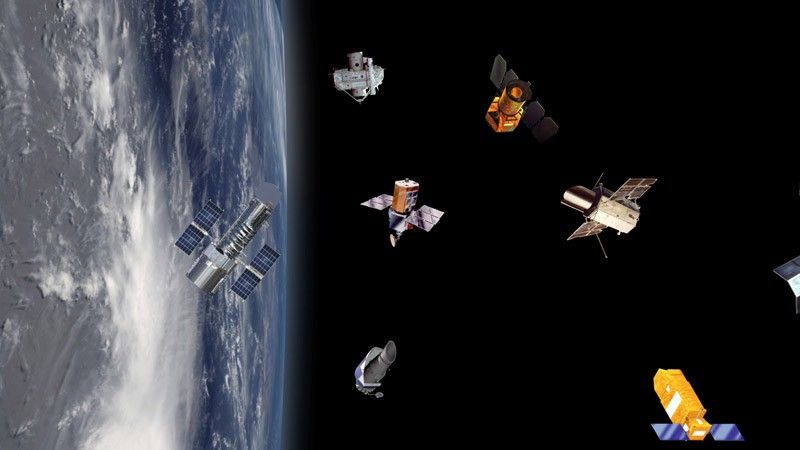
Mikulski Archive for Space Telescopes (MAST)
This video describes the Barbara A. Mikulski Archive for Space Telescopes (MAST), located at the Space Telescope Science Institute in Baltimore, Md. The archive holds data from 16 NASA telescopes, including current missions such as the Hubble Space Telescope and Kepler, a...
Share
Details
Claire Andreoli
NASA’s Goddard Space Flight Center
Greenbelt, Maryland
claire.andreoli@nasa.gov

